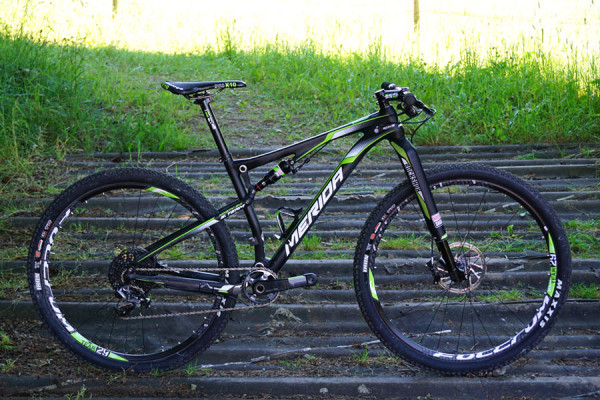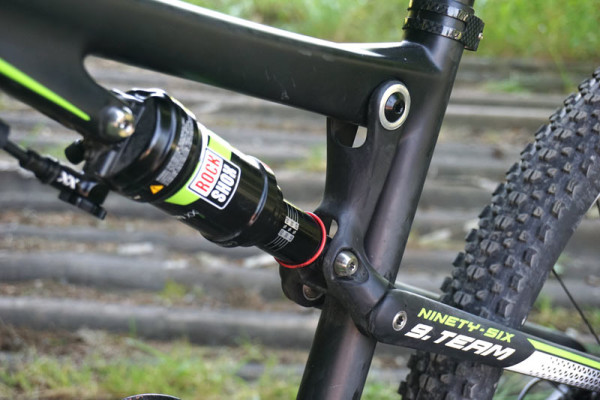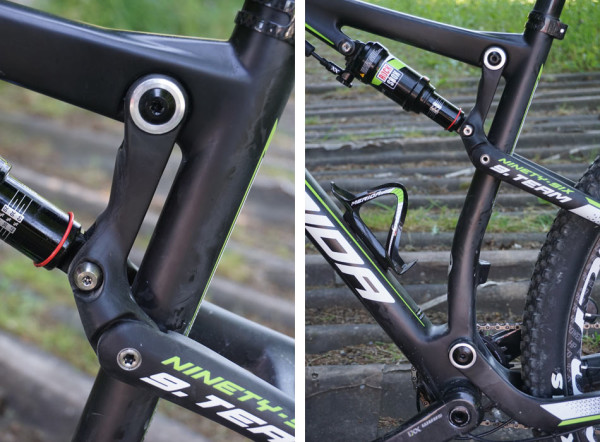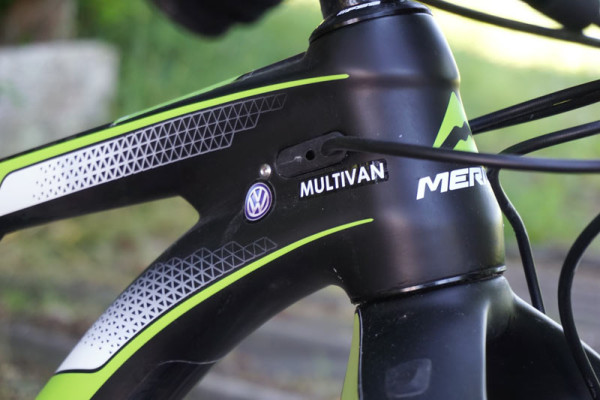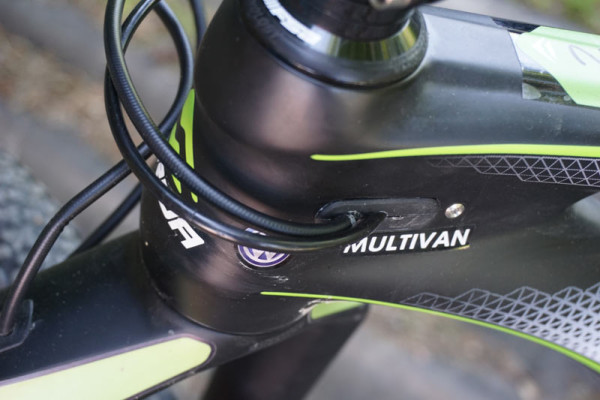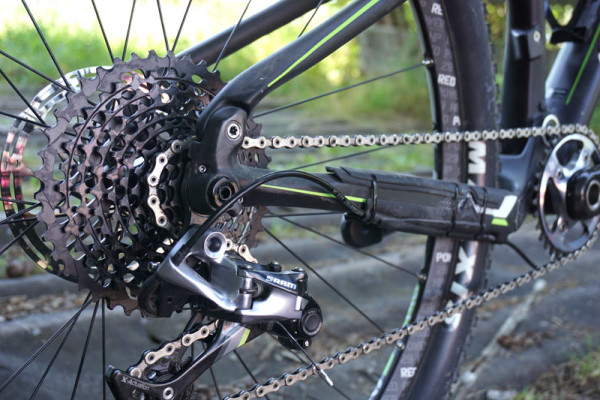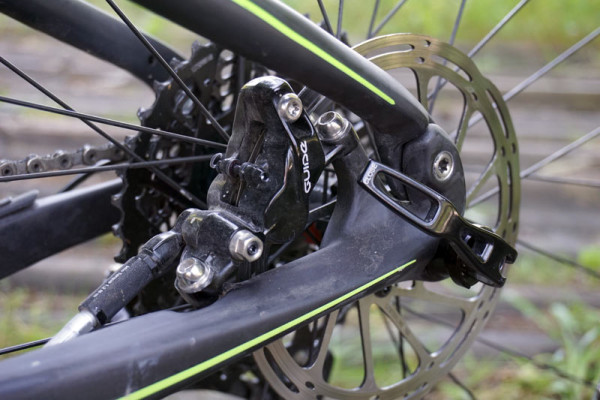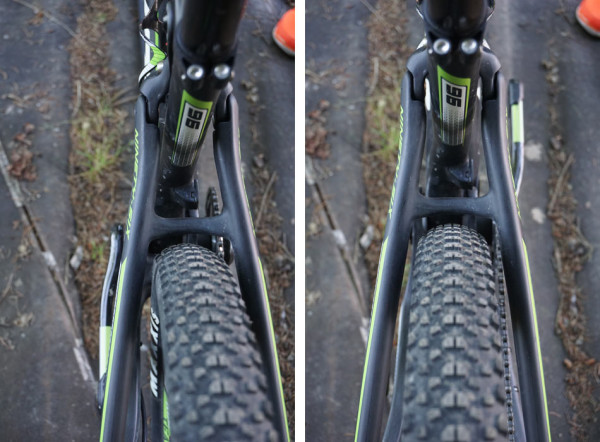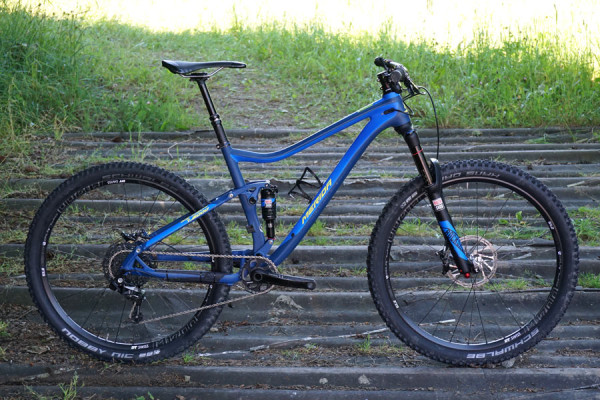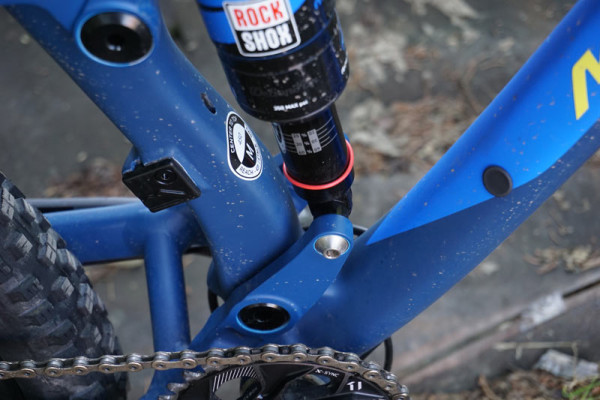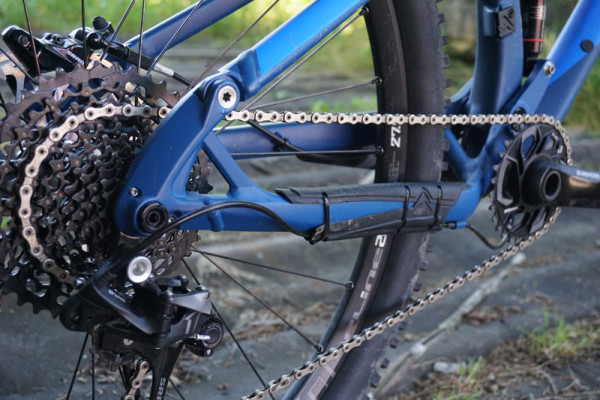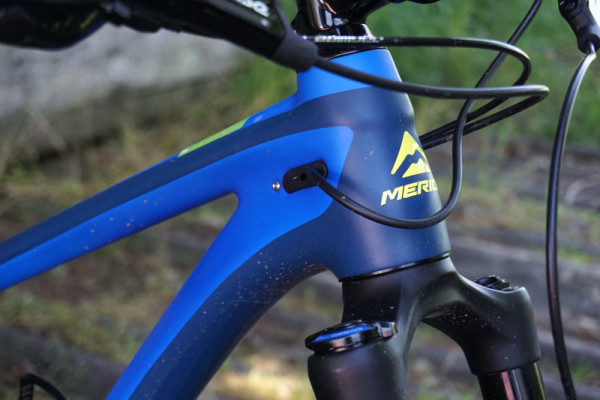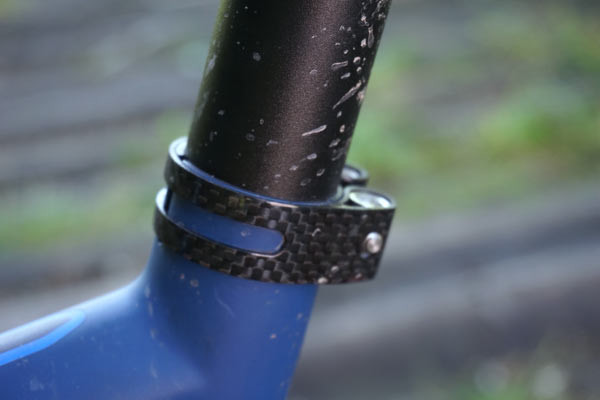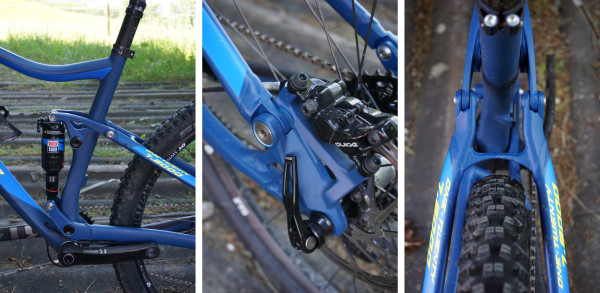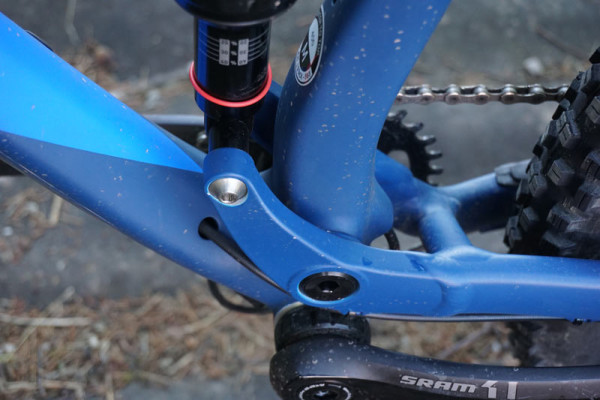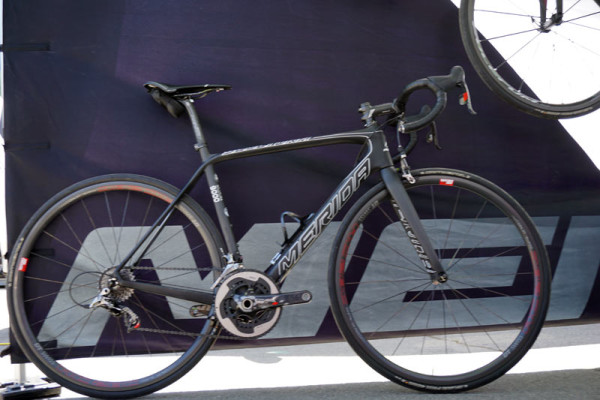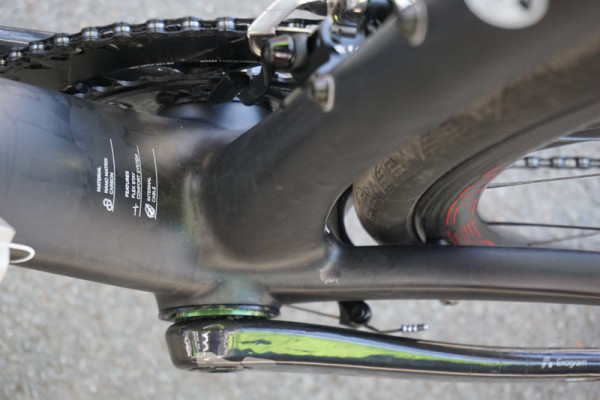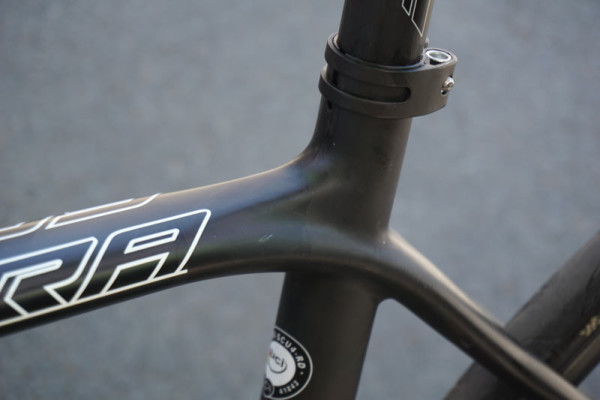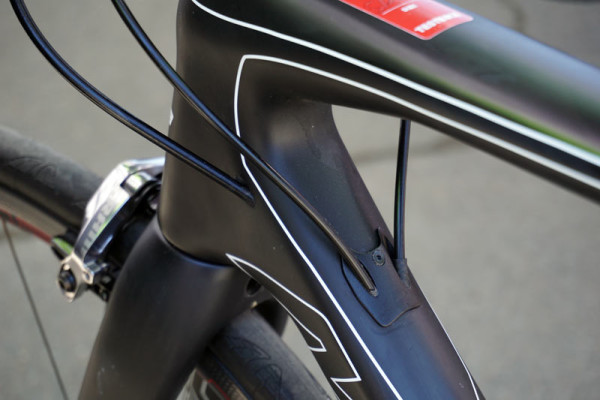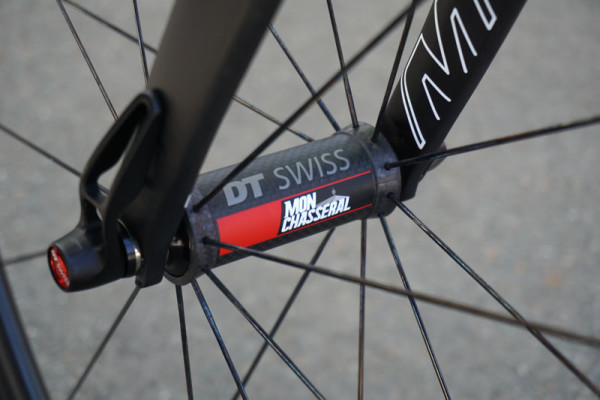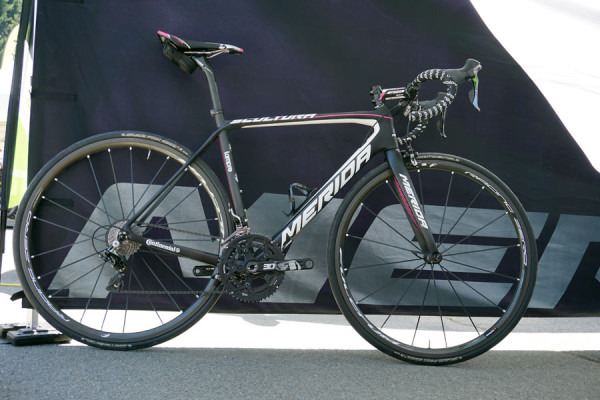The new Merida Ninety Six full suspension XC mountain bike is a bit of a throwback to the original, which was designed around the then-popular triple chainrings. Then the Ninety Nine came out to work better with double chainrings and used a rocker arm with vertically mounted shock.
Now, the new 2016 Ninety Six goes back to a horizontally mounted shock with vertical linkage and a design specifically for single chainring drivetrains. 3, 2, 1, GO!
One of the reasons they switched back to this shock layout is that the remote lockout cable (or hose in this case) can be short (and thus lighter) and doesn’t move with the suspension.
The suspension is designed around 25% sag, at which point they say anti-squat is right at 100%. They’ve developed the bike with size specific wheel sizing, offering small and medium in 27.5″, and 29er in medium on up. The 29er gets 96mm rear wheel travel, and 27.5″ frame with 110mm rear travel. Both wheel sizes use a 100mm fork. Slight tweaks in upper pivot placement on each wheel size keep the aesthetics looking good and improve standover on the bigger wheeled bikes.
Four frame levels, from full carbon to full alloy, but all have carbon rocker link. And all frame parts are interchangeable since the geometry is the same, which means even the least expensive models are just as race oriented. MORE suspension design makes sure that the suspension kinematics are exactly the same across all frame sizes.
Merida’s Smart Entry System uses ports that clamp the housing so they can be pulled tight inside the frame to prevent rattling. Carbon frames use internal routing for everything, and alloy frames keep the rear brake and shock remote external.
The top level CF5 frame comes in at a claimed ~1,900g (final production weight TBD). The CF4 frame uses the same rear triangle with a slightly heavier front triangle. The entry level carbon CFA frame uses that same front end with an alloy rear triangle.
The geometry follows trends for 2016, yielding a shorter wheelbase, lower BB and head tube and longer reach, giving it a racier, more aggressive rider position for XC.
Tire clearance is decent for a short travel race rig, and it sticks with standard 12×142 rear end spacing…no Boost on this bike.
The new Merida One-Twenty gets 130mm up front to make it a bit of a trail bike, but keeps 120mm travel in the rear.
Floating link suspension gives them better control over the leverage ratio throughout the full range of movement and should give the bike a comparatively bottomless feel.
Like the Ninety Six, it uses SSW (Size Specific Wheels) with both 27.5″ and 29er depending on frame size.
It even gets the Smart Entry clamping cable ports, installed into an all-new carbon front triangle. Lower priced alloy models get a new, lighter front triangle for 2016, too.
Trail builds gets a dropper, held in place with this nifty carbon clamp, and a shorter stem. Endurance builds gets standard post, longer stem and slightly narrower bars.
Double bearings on the brake side rear pivot improve stiffness and durability.
Dropper cable routing pops out of the downtube and pops back into the backside of the seat tube. The rear brake hose leaves the top of the downtube and connects to the bottom of the chainstay.
Merida says the One Twenty is a good first time full suspension bike, but also perfect for anyone seeking a budget ripper in the all alloy build. The carbon model fully equipped will be more in the mid-range. Pricing won’t be set until Eurobike.
Merida introduced the new Scultura as the “lightest production road bike” in May, and this 9000 model gets the same 730g frame as the 9000 Ltd. Merida’s reps said that means wall thicknesses down to just 0.3mm on a frame that’s made to be a showcase of what they can do technically. Even they say it should be handled with care (as in, don’t sit on the top tube), but it can be ridden just as hard as any other high end road bike.
The rear brake goes south to give the seat stays more compliance, and it’ll fit up to 28c tires.
NACA fastback profiles to make it aero but still laterally stiff and light weight.
The 9000 model bike comes in at a claimed 5.4kg (11.9lb) complete, helped out by the new limited edition DT Swiss Mon Chasseral road wheels.
The Lampre Team version uses the CF4 frame at 820g so it’s a little more durable and lets the team more easily meet the UCI’s minimum weight requirement. The team bikes come in at a claimed 6.6kg (14.55lb) with an SRM power meter.
That’s a lot of development for a frame when things are slowly moving toward disc brakes, and they told us the pro team will be testing disc brake models in 2016.
